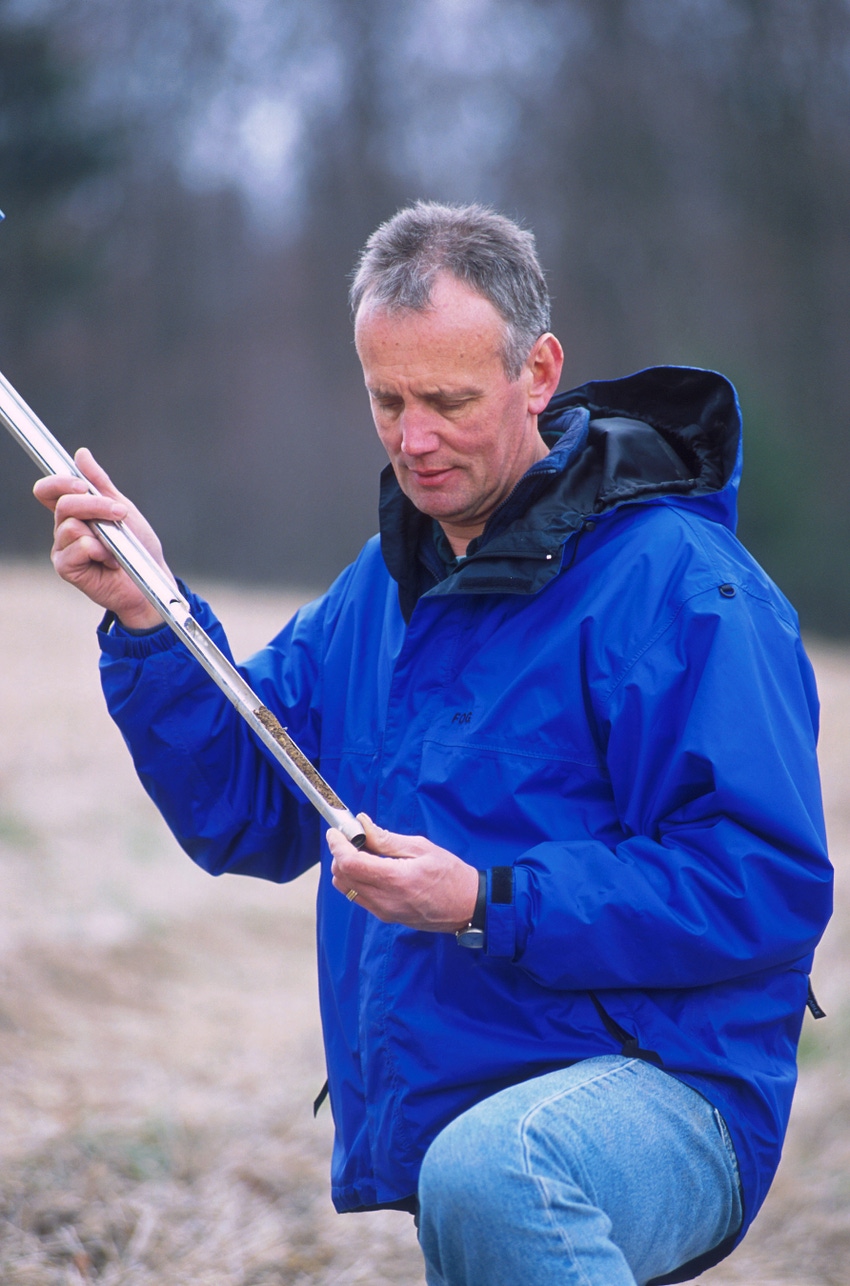October 9, 2012

Because of the drought this growing season, soil sampling after harvest becomes very important this year says Ron Gelderman, SDSU soils Extension specialist. "Soil sampling should be part of any nutrient-management program but is even more important after a dry year with limited yields," Gelderman says. "For those fields that were severely moisture stressed, available nitrogen (N) carryover may be higher than normal."
Gelderman says all growers should take 2-ft. soil samples throughout their fields and have them analyzed for nitrate-N; especially for those fields going into a non-legume crop.
"If the rotation hasn't yet been set, sample and analyze as if it will be a non-legume crop. As the old adage goes 'It is better to have it and not need it, than to need it and not have it.' The additional sampling cost is inconsequential compared to potential fertilizer savings or yield gain," he says.
Gelderman says that past drought years have shown higher than average carryover levels. For example, the average carryover nitrate-N level following corn, is about 70 lbs./acre. In a dry year, he says it would not be unusual to measure 100-120 lbs./acre of carryover N after poor yields on some of these moisture-stressed fields.
"That is a difference of 30-50 lbs., or about $18-30 an acre in savings with today's N prices. Some laboratories have been reporting average carryover nitrate-N values of 20 lbs./acre higher than average for this fall," he says.
However, Gelderman says this is not always the case. Which is why testing is a must this fall.
"One of our moisture-stressed N-rate trials on corn near Beresford had near average carryover levels. In that case, if the grower 'guessed' at carryover levels of 30 lbs./acre more than average, yield might very well be 5-10 bu. an acre lower than would be with the proper test and recommendation. The point is we cannot predict what the carryover levels will be. Therefore, every field should be tested."
Because of the fact that within many fields there could be high carryover N variability that may reflect the high yield variability due to differential soil moisture within that field, Gelderman recommends zone sampling.
"A zone sampling program based on yield zones may show some large N fertilizer savings for next year and will put the N where it is needed and not oversupply other areas of the field where it is not," he says.
Given the poor yields in some fields, there would be less phosphorus (P) and potassium (K) removed with the grain, as well. However, Gelderman says measuring the availability of carryover P and K is more difficult than for N.
"The soil P and K test may have increased slightly (due to less removed with the lower yields) but yield, tillage, residue removed, soils, precipitation and temperatures all can influence how much of these nutrients become available for next year's crop. It is best to follow soil test guidelines for those nutrients and not give a "credit" for any unused nutrients."
In a dry fall, he says it is not unusual to find K tests even lower than in a "normal" year. The reason is that the lower rainfall after harvest has not moved the K from the plant residue into the soil. Potassium will move quite readily with water while plant N and P are tied up with organic compounds and will depend on microbial decomposition become they become available.
You May Also Like




